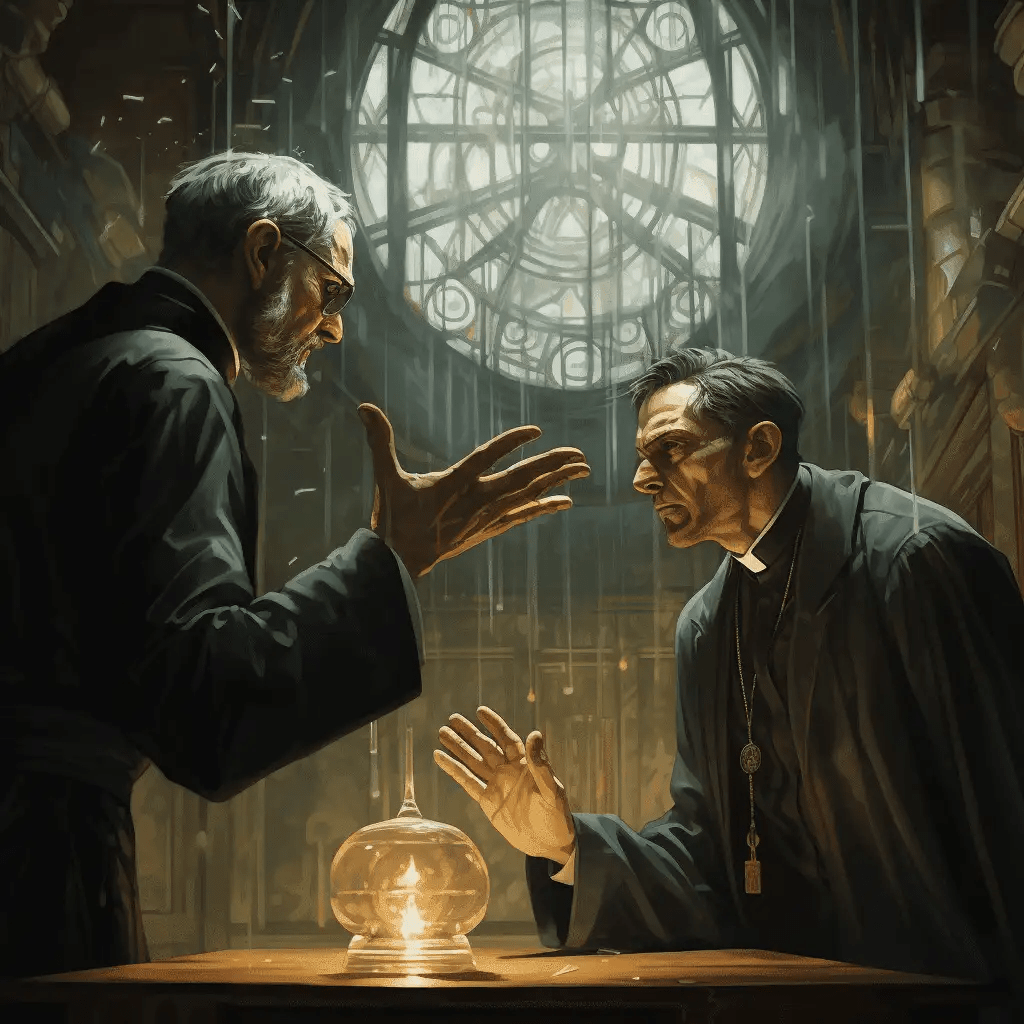Reconciliation of Religious Beliefs with Today’s Knowledge
Religious beliefs form the cornerstone of countless individuals’ spiritual journeys. These beliefs provide a framework for understanding existence, purpose, and the connection between the human and the divine.
Throughout my youth, I spent countless nights studying comparative religion, only to discover that there are more similarities than differences among various religions. Stories like Noah’s Ark and the flood are depicted across all major religions, beginning with the Sumerian and Babylonian tradition and followed by references in the Old Testament, and Islam.
| Religion/Mythology | Date | Brief Story |
| Sumerian | 17th-16th century BCE | Ziusudra, a king and priest, receives a divine warning about an impending flood. He builds a boat to save his family, animals, and himself. |
| Babylonian | 18th-11th century BCE | In the epics of Atrahasis and Gilgamesh, the gods send a flood to destroy humanity. Atrahasis and Utnapishtim build boats to save their families and animals. |
| Hinduism | 4th century BCE-4th century CE | Lord Vishnu, as Matsya, warns Manu about a coming flood. Manu builds a boat and fills it with seeds, animals, and his family to repopulate the Earth. |
| Judaism | 10th-5th century BCE | God commands Noah to build an ark to save his family and pairs of every animal from a great flood sent to cleanse the Earth. |
| Christianity | 4th century CE | The story of Noah’s Ark and the flood, as found in the Christian Old Testament, is the same as the account in the Hebrew Bible. |
| Islam | 7th century CE | In the Quran, Allah instructs Noah (Nuh) to build an ark to save his family and pairs of animals from a devastating flood. |
It’s a natural tendency to want to reconcile any beliefs we hold with other contemporary knowledge. However, when we cannot reconcile these differences, it can create cognitive dissonance—our beliefs tell us one thing, while our rational faculties and scientific breakthroughs suggest something different. This occurs when we experience discomfort or internal conflict because our religious beliefs contradict observable facts or rational understanding. Here’s an example:
A devout religious person believes that the Earth is only 6,000 years old (In October 2023, the Hebrew year 5784 will begin) based on their interpretation of religious texts. However, they are confronted with scientific evidence such as geological records, carbon dating, and the fossil record, which indicate that the Earth is approximately 4.5 billion years old. This contradiction between their religious belief and the scientific evidence creates cognitive dissonance.
To resolve this dissonance, one may choose to reinterpret their religious texts to accommodate the scientific findings, or reject the scientific evidence as flawed or biased. Each of these approaches is an attempt to alleviate the psychological discomfort caused by the conflicting beliefs.
Throughout the start of various religions, which typically began around four millennia BC or about 6,000 years ago, there have been contradictions between religious beliefs and contemporary knowledge. These contradictions can create conflict in our minds, as there are numerous scenarios where our religious beliefs and the knowledge we hold as true today do not align. It’s possible that new scientific breakthroughs in the future could change our current views.
Consider the example of the Big Bang theory, which is the prevailing cosmological model explaining the origin of the universe. According to this theory, the universe began as a hot, dense singularity, which then expanded rapidly around 13.8 billion years ago, giving rise to the vast cosmos we observe today. The Big Bang theory is widely accepted among scientists and supported by extensive empirical evidence, such as the cosmic microwave background radiation and the observed expansion of the universe. Therefore, we currently accept the Big Bang Theory as the explanation for the formation of the universe. This is true as of today, but our understanding could be different 100 years from now, as we might have a new explanation for the universe’s formation. At any given time, we are attempting to reconcile these two seemingly irreconcilable domains of our lives. My suggestion in this regard is: why bother? There is no need to reconcile these two completely different domains of our lives.
By keeping these domains separate, we can avoid contradictions in our minds about any theory, ideology, or belief. We will not experience cognitive dissonance, and we can wholeheartedly accept all scientific breakthroughs using rationality, reason, and experimentation as our guiding tools. On the other hand, we can hold onto our religious beliefs because these two domains do not have to overlap. These are two distinct, separate areas of our lives, and we can keep them that way. We should compartmentalize our beliefs, keeping the religious and scientific understanding separate. I call this the Theory of Faith-Science Compartmentalization.

